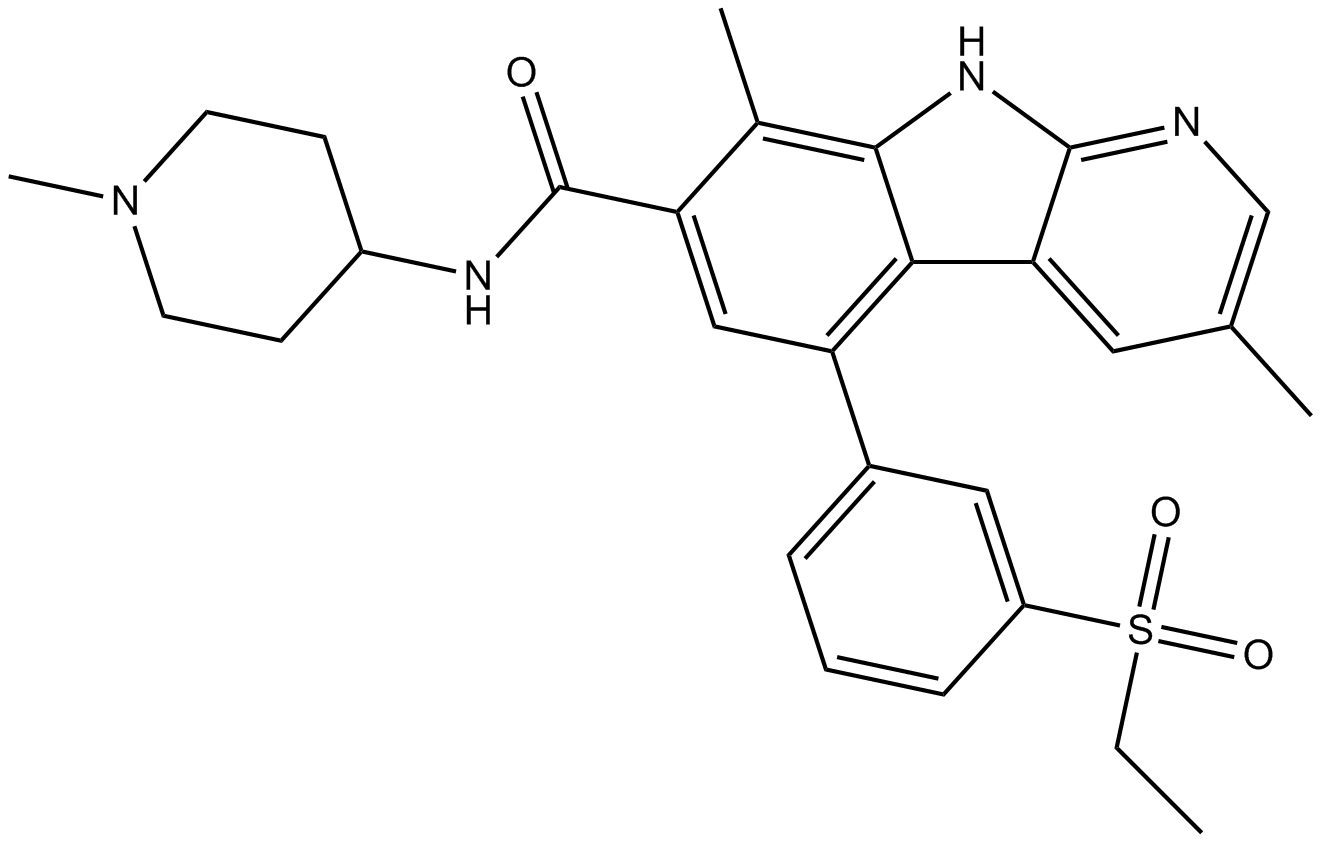TAK-901 |
| Catalog No.GC11085 |
A non-selective inhibitor of Aurora kinases
Products are for research use only. Not for human use. We do not sell to patients.

Cas No.: 934541-31-8
Sample solution is provided at 25 µL, 10mM.
IC50: 0.0017, 0.021 for Aurora-B/INCENP and Aurora-A/TPX2, respectively
Protein kinases Aurora A, B, and C play crucial roles during mitosis and cell division, are frequently elevated in cancer, and represent attractive targets for therapeutic intervention. TAK-901 is a novel, multitargeted Aurora B kinase inhibitor derived from a novel azacarboline kinase hinge-binder chemotype.
In vitro: TAK-901 exhibited time-dependent, tight-binding inhibition of Aurora B, but not Aurora A. Consistently, TAK-901 suppressed cellular histone H3 phosphorylation and induced polyploidy. In various human cancer cell lines, TAK-901 inhibited cell proliferation with effective concentration values from 40 to 500 nmol/L. TAK-901 potently inhibited only a few kinases other than Aurora B in intact cells, including FLT3 and FGFR2 [1].
In vivo: In rodent xenografts, TAK-901 exhibited potent activity against multiple human solid tumor types, and complete regression was found in the ovarian cancer A2780 model. In vivo biomarker studies showed that TAK-901 induced PD responses consistent with Aurora B inhibition and correlating with retention of TAK-901 in tumor tissue. [2].
Clinical trials: An open-label, dose escalation, phase I study has been conducted to identify the MTD and PK profile of TAK-901 in adult patients with advanced solid tumors or lymphoma.
Reference:
[1] Farrell P, Shi L, Matuszkiewicz J, Balakrishna D, Hoshino T, Zhang L, Elliott S, Fabrey R, Lee B, Halkowycz P, Sang B, Ishino S, Nomura T, Teratani M, Ohta Y, Grimshaw C, Paraselli B, Satou T, de Jong R. Biological characterization of TAK-901, an investigational, novel, multitargeted Aurora B kinase inhibitor. Mol Cancer Ther. 2013;12(4):460-70.
Average Rating: 5 (Based on Reviews and 30 reference(s) in Google Scholar.)
GLPBIO products are for RESEARCH USE ONLY. Please make sure your review or question is research based.
Required fields are marked with *




















